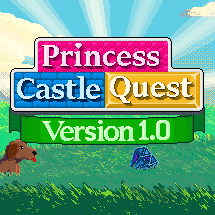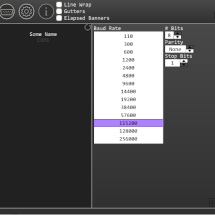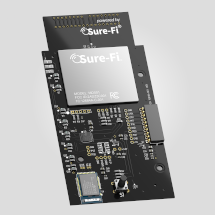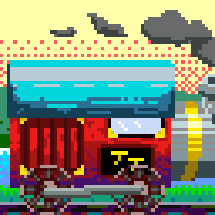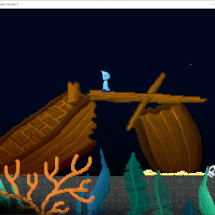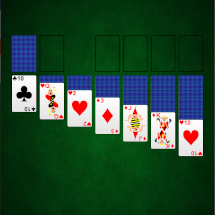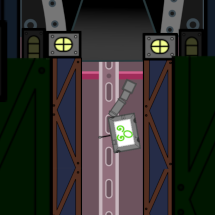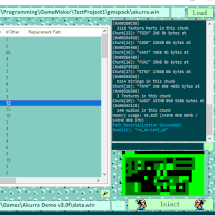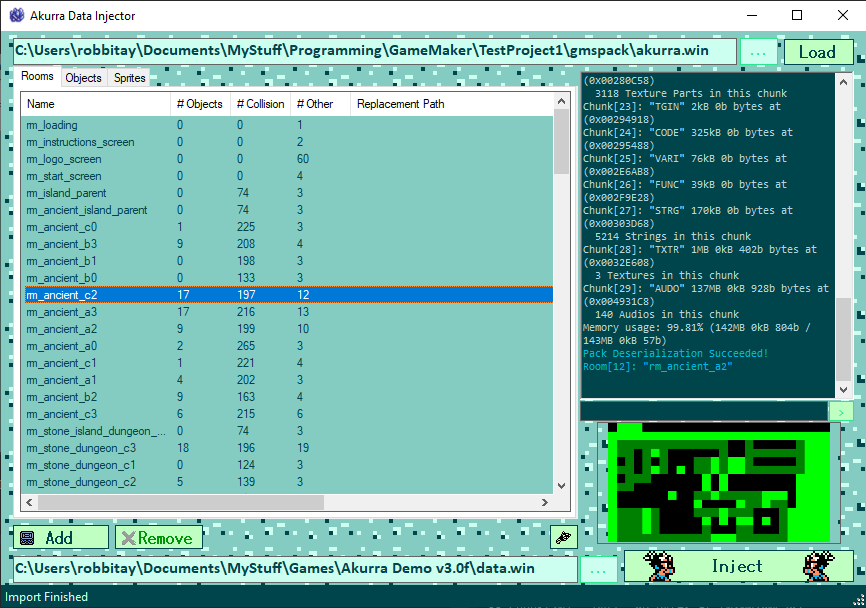My name is Taylor Robbins and I have been programming and making games for 13 years. This a short list of some of my more recent or more complete projects that I have worked on. You can find a longer list of older and less complete games on the projects page
Click an image to jump to a section:
Princess Castle Quest
Made December 4th 2017 - March 24th 2021
A 2D Puzzle Adventure Game with Full Level Editor and Local Coop
Buy Full Game / Download Demo:
Description
Princess Castle Quest was the first project that I decided I was going to “finish” and ship properly. It started out as a recreation of an old idea that I had tried in High School with my brother when we were in a programming class together. We were inspired by games like Chips Challenge and the dungeons from The Legend of Zelda. We wanted to include as many puzzle mechanics as possible and also provide a level editor where people could try making their own levels and combine mechanics in ways we never even dreamed of. This is by far the biggest project I’ve worked on with over 150,000 lines of code, a team of 5 people, and a bit of contract work for trailers, legal documents, and other business necessities. The project has forced me to grow as a programmer and also introduced me to a dozen other roles and responsibilities that I’ve never tried to fulfill before. During the last year of development I decided to go full-time in order to properly realize the vision that we had for the game as well as give me time to properly focus on the work required to finish a game. I learned so many things including methods to encourage and manage people and expectations, how and why you might trademark a title, how to set up legal agreements and pay royalties, how to work with artists and composers to iteratively create and refine assets for the game, how to manage a community of people interested in the product, how to develop interest and market the game properly, how to playtest and manage code changes and mistakes, how to maintain a changelog and version information, how to obtain and record feedback from playtesters and friends, and so much more. In the end, as with all creative endeavors I assume, the game is not perfect and I wish I could spend many more hours adding and fixing and refining things. However, I am really happy with the finished product and I think it will always hold a place in my heart as the first real game I made.
Const Port
June 12th 2017 - March 15th 2019
A simple little UI that stores and displays data from a COM port in a nice and readable way. Used for 4 years at work as an embedded engineer at Sure-Fi
Download:
Description
Const Port was a simple little program that I worked on in my off time while working for Sure-Fi and ended up saving me countless hours over the 4 years I worked there. I was dissatisfied with the available programs for reading data from COM ports on windows (like PuTTY and TeraTerm) and wanted something that had stuff like colored lines and smooth scrolling. These things are vital in scenarios like the one depicted in the video where data is constantly being printed out and I wanted to get a handle on how often it’s coming in and I needed to track certain lines with my eyes and scroll back up while data is still coming in. The line coloring is handled by the regex configuration options that match the first character of every line (0x01-0x05) and changed the line color based off that. I also enjoyed being able to add simple yet helpful features over time like the “LEDs” in the top right that indicate data received or data transmitted and can really help visualize the frequency of messages coming in. This program also went on to be used on the production line to take incoming data from a hand-held scanner, talk to the microcontroller on the product being registered, and communicate with a server through APIs to log the information and request licenses for the new product. We even sped up production by displaying QR code labeled buttons that the assembly person could scan with their scanner rather than manipulating a mouse or keyboard and we added sound effects to queue them in on successes and failures of the process to help them spend less time reading repetitive debug output. I also started work on a newer version of the program in late 2018 that had better support for selection and text manipulation but I never finished it to the point that it would replace the old version. Also the old version worked well enough that there was no real need to replace it. This project taught me a lot about text manipulation, input devices, and font rendering as well as some old Win32 APIs for interacting with COM ports and how drivers for various pieces of hardware normally work. It also made a massive difference to my productivity level as an embedded programmer since I could debug problems faster and catch them sooner. Whereas other embedded engineers would often take the restrictions of working on a physical microcontroller as a given and try to deal with the fact that most of the operations going on in production units were a black box. Overall Const Port was a wonderfully successful tool for me and well worth the invested time.
Sure-Fi Module
March 2016 - March 2020
News coverage of the Sure-Fi Module which I developed and managed the firmware stack for
Sure-Fi Website:
Description
In conjunction with the lead RF Engineer at Sure-Fi Craig Boswell I designed a Radio Module interface that can control the 900MHz radio using external application boards that communicate to the module over a UART connection. I had to design and implement a stack that would manage packets, collisions, and retries as well as robust encryption and pairing sequences. This project was the first project that I worked on for longer than a year and it was a really good learning experience for me in how to organize large code bases and create documentation. It also was very technically challenging to come up with a good protocol for communication that was robust and dealt with errors while also being versatile so that different applications could use the radio in different ways. I also worked closely with the CTO John Robinson to create a reliable yet simple to execute pairing process which used QR codes and embedded bluetooth chips to connect two devices together so they could communicate.
Loco Stoko
Made July 10th-12th 2020
A game about a train that is Out of Control! Quickly lay track before your train crashes. A GMTK 2020 Game Jam Game.
Download:
Description
Built using a fork of the engine from Princess Castle Quest we made this little game in 48 hours for the Game Makers Toolkit 2020 Game Jam which had the theme “Out of Control”. We originally started with the idea of a rythm based gameplay mechanic where you are throwing colored coal into a furnace of a run away train in order to signal what sort of tracks should be built next. The rythm mechanic had to be scrapped since we ran out of time to tune the game so it wouldn’t be too difficult but the basic gameplay is still surprisingly fun and the music is pretty groovy with the train puffing sounds setting the beat. I had 4 friends helping with the project, Cayla for artwork, Levi for music, Devon for level design and writing, and Kyle doing miscellaneous artwork, testing, and level design.
Ghost Ark
June 27th-29th 2020
A game jam game made in Game Maker about a lost soul and alternate realities
Download:
Description
Ghost Ark was a test project to help us get familiar with Game Maker as an option for the upcoming GMTK Game Jam we were planning to do. We ended up deciding not to use Game Maker for that jam but it worked quite well for this little experiment. We started out with the idea of doing alternate realities that were generated but asking “what if you didn’t press that button as well?” or “what if you released it just a bit sooner?” Ultimately this led us to a weird mechanic where you use your alternate colored versions of yourself to possess and control barrels for a short period of time. This was not very intuitive for most players but it was an interesting idea that we enjoyed exploring. The team for this project was just Devon and I. All of the graphics, level design, and programming were done in by us while the music and sound effects came from https://www.opengameart.org/
Solitaire
2017
A simple solitaire clone built in C# with OpenTK. Card designs created by someone else but vectorized by me in Inkscape
Download:
Description
This was a fun little side project that I did back in 2013 that ended up being one of my most personally replayed game since it was fully implemented and generally looked nice. It’s nothing super complicated but I really enjoyed making vector versions of these card designs I had come across online. It has support for shift+clicking to quick move cards and a nice little cut and bouncing animation when you complete the game. It also supports detecting a guaranteed win state and auto stacking the rest of the cards for you if you so choose.
ORSLA (One Robot's Single Limb Adventure)
August 2nd-4th 2019
A physics based platformer made in our custom engine with the help of Box2D. Made in 48 hours for the 2019 GMTK game jam.
Download:
Description
Given the theme “Only One” we started working with the idea of a zombie who only had one arm left and he had to attach and use it on various spots on his body in order to move around. During the first few hours of the jam we tried using Godot to create this idea but two things became clear: 1. Godot’s physics system wasn’t going to cut it with the limited joint options and 2. A square with a face was much more effective and relatable. So we restarted the project, again using a forked version of the engine for Princess Castle Quest with Box2D tacked on, and explored the idea of the main character being a defective robot trying to escape a factory. Overall we were successful in making a game that was playable but it ended up being way too difficult for most people to pick up. Partially for lack of a good tutorial and partially for lack of time spent tuning the movement options and control scheme to be more intuitive and enjoyable. It was fun making a working level editor during the jam and then using that level editor to plaster decorations and define collision geometry but it also took about half of the time to complete the editor making it hard for the other members to begin and complete their work early on in the jam (a lesson I took and used later when we repurposed the PCQ level editor for Loco Stoko). We also had fun trying out a song that only used C notes as another way to fit the theme of the jam. This project also gave me a good idea of how helpful it can be to use an off the shelf physics engine but also the drawbacks that come with it when trying to tune the system and debug problems.
DirectX Voxel Engine
December 13th 2016 - March 26th 2017
A 3rd person voxel-based adventure prototype with rogue-like vision culling/lighting
Description
This project started out as an experiment to see what how the DirectX 9 API functioned in order to give context when learning newer versions of DirectX. I made a simple sparse chunk voxel system that would automatically add new chunks when needed and some neat tools that helped with manipulating the voxels in a more efficient way than just removing or adding one voxel at a time. While the game design never fully got finalized I really enjoyed the feeling of 3rd person exploration of 3D voxel geometry making using of the back face culling to get rid of the 4th wall and allow you to view the player from all sides, even in cramped spaces. In order to facilitate this sort of perspective I tried out a system of lighting that would cast rays in all directions from the player and only draw voxel faces that were visible by the player so that way when you walked through the doorway into a house all of the outer faces of the house would disappear allowing you to easily see your character inside the house.
Missing.pkg
December 18th-20th 2020
An RPG Maker game about a TCP/IP packet that loses his destination address and must explore around the network to recover the pieces.
Download:
Description
This game was made during a small local game jam that was centered around the RPG genre of games. We decided we wanted to try and use RPG Maker despite it’s constraints in order to explore what kinds of things the engine could actually do. I remember using RPG Maker as a kid and being frustrated with the Ruby scripts that you are allowed to access and edit so it was a nice experience returning to them as an adult and seeing how much more I was able to manipulate and manage them. The game ended up being largely unfinished since we didn’t have enough time to complete making a custom battle system and therefore a lot of the planned interactions feel a bit hollow. However, we enjoyed the jokes that we were able to fit into the game in time and the 1-bit-esque graphics style that we chose was very fun to create artwork for. Also the diagonal movement system for the network with arrow key redirects around 45 angles worked flawlessly and was quite a nice addition to the otherwise mostly boring movement system in RPG Maker games.
Akurra Data Injector
December 2020
This was a simple little side project that would deserialize the Game Maker data file for Akurra and replace room definitions with our own modified rooms. This was pursued in conjunction with the creator of the game and was mostly just a fun pass time. The project ultimately served 3 purposes:
It’s built in C# with a C++ DLL doing the core deserialization job. This helped me learn how to handle C++ linkages in C# and how much overhead/complexity it adds to a project to have this cross-language split
It helped me practice a bit of reverse engineering and binary file format manipulation
It allowed me to try out my own puzzle ideas while talking with the creator of the game and was a fun way to engage with a friend who is also working on a game.


